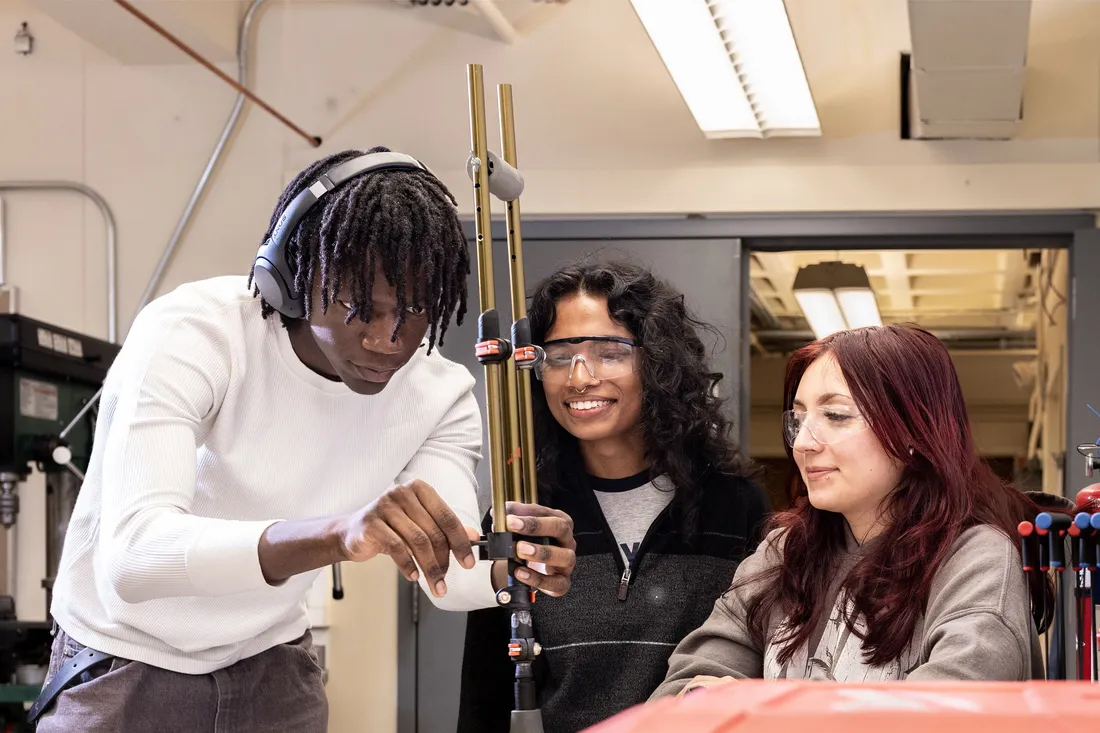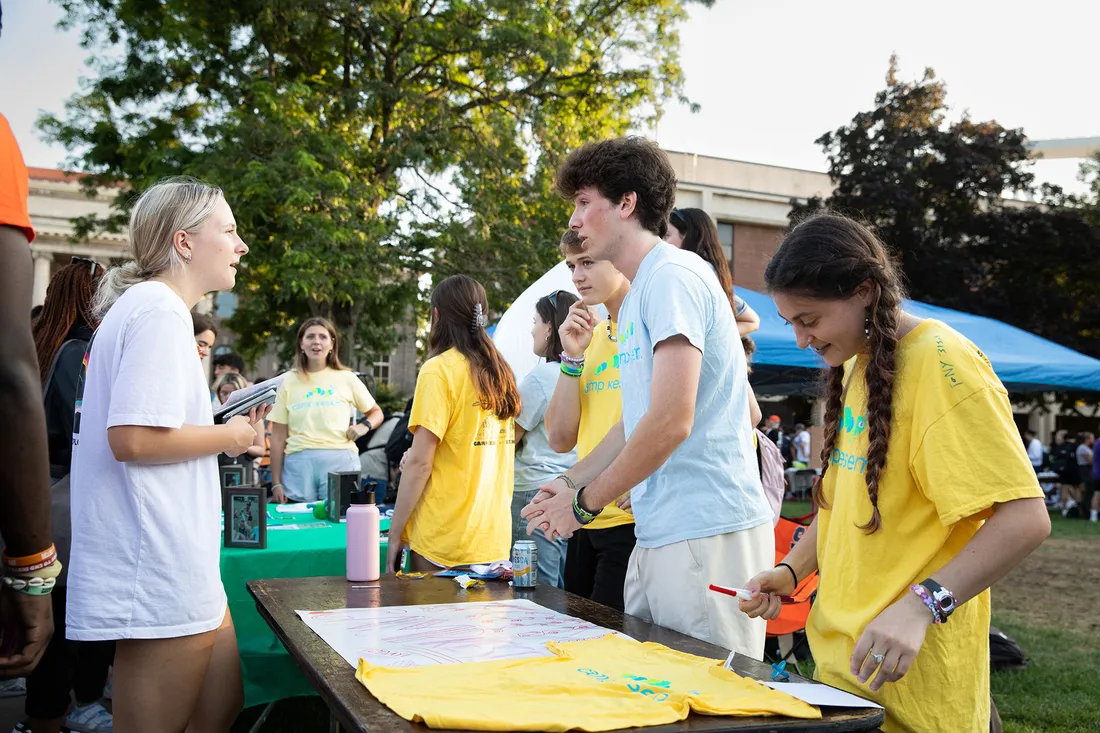Peptide Breakthrough Revolutionizing Diabetes Treatment
Weekly injection reduces diabetes risk and enhances heart health, with potential beyond.
Imagine a weekly injection that not only treats diabetes, but also lowers the risk of heart attack and stroke, all without any harmful side effects.
That’s the idea behind a new class of compounds co-developed by Robert Doyle, a medicinal chemist at Syracuse University. He and Christian Roth, a noted endocrinologist at Seattle Children’s Hospital, have created a novel peptide treatment called GEP44. The peptide is a chain of 44 amino acids—no relation to the University’s historic jersey number—that reduces eating and boosts calorie burn.
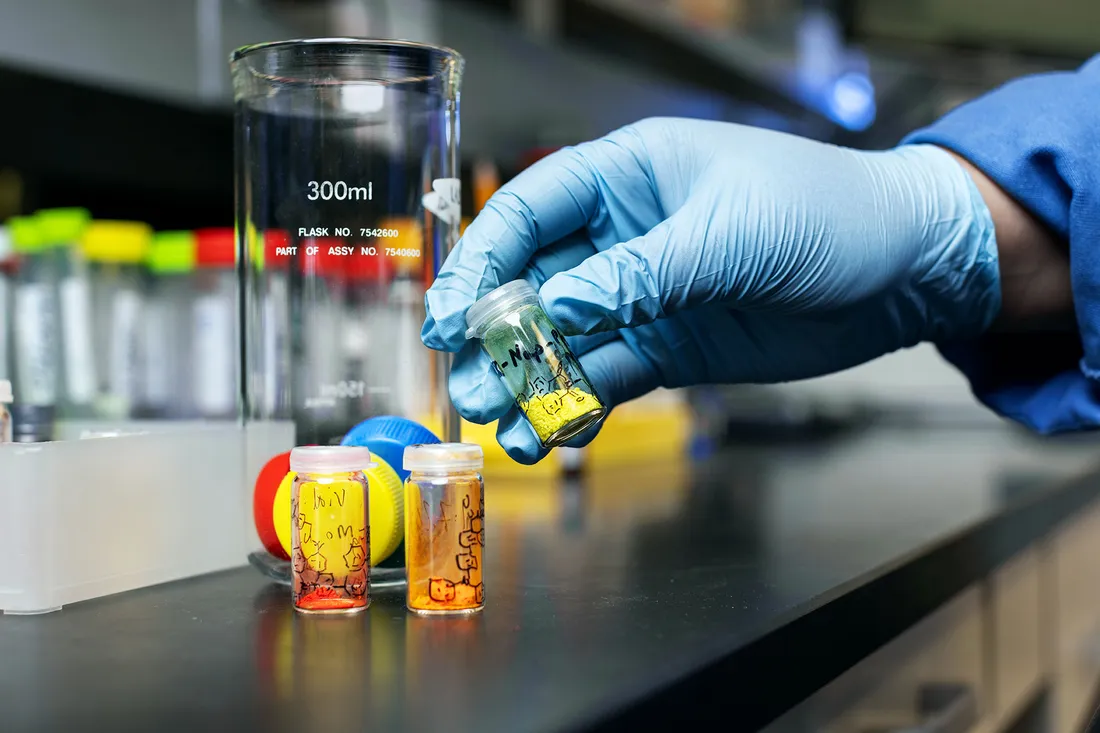
A team of researchers at Syracuse University, led by medicinal chemist Robert Doyle, has co-developed a novel treatment for diabetes without harmful side effects.
“GEP44 is linked to high-energy expenditure, which takes the form of increased movement, heart rate or body temperature,” says Doyle, Dean’s Professor of Chemistry in the College of Arts and Sciences. “The drug also prompts a molecular switch in our brain, causing us to feel full. Therefore, we lose weight by eating less.”
Following a spring meeting of the American Chemical Society (where GEP44 was unveiled), Doyle declared diabetes a global epidemic, expected to strike 1.3 billion people by 2050. Most cases involve type 2 diabetes, in which there’s too much sugar in bloodstream. “Diabetes is caused by various unavoidable factors, including family history, age and race, but the biggest one, weight, usually can be managed. That’s where GEP44 comes in,” he says.
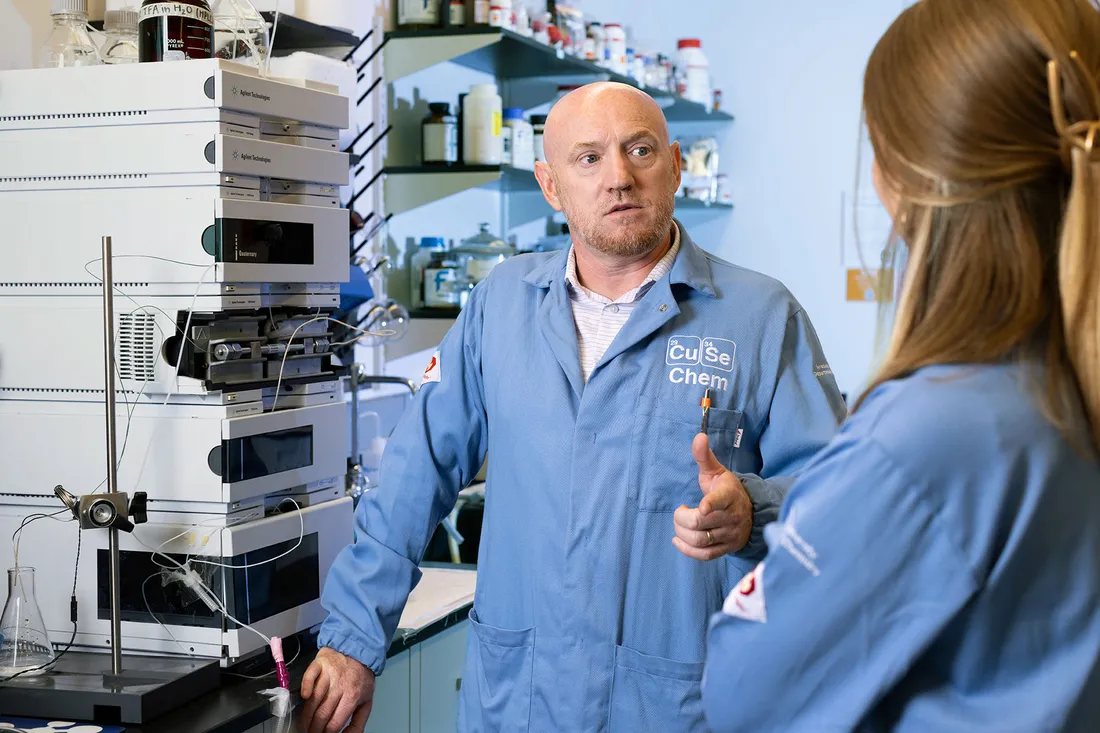
Doyle confers with lab member Emily Ashlaw G’27, a Ph.D. candidate interested in peptide therapeutics. She's part of a team of students working at the nexus of chemical and pharmaceutical science.
Bringing Research to Life
If anyone adds value to Syracuse’s research portfolio, it’s Doyle—teacher, mentor, researcher, entrepreneur. Small wonder that his background in synthetic chemistry, drug delivery and protein chemistry has spawned numerous honors, awards and patents.
“I develop drugs for the treatment of vitamin and mineral deficiencies as well as obesity and diabetes,” says the native of Ireland, who holds three degrees, including a Ph.D., from the University of Dublin.
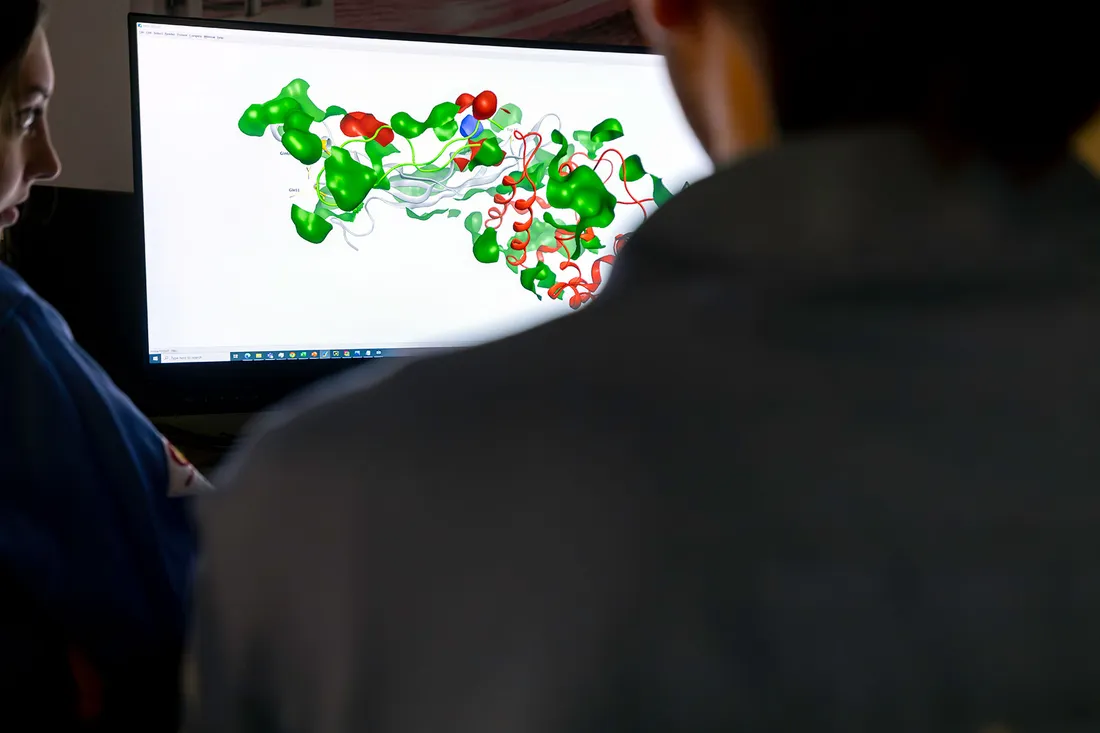
Students analyze a digital rendering of GEP44, a chain of amino acids that, among other things, reduces eating and boosts calorie burn.
Much of his work takes place on the third floor of the Life Sciences Complex, where he collaborates with students, faculty and postdoctoral researchers. Nicholas Najjar ’21, a Ph.D. chemistry student, was among those who helped bring GEP44 to life. “The peptide interacts with different gut receptors that, in turn, secrete hormones,” he says. “The hormones do important things, like normalize blood sugar.”
Najjar explains that GEP44 also pulls glucose into muscle cells, where it’s used as fuel, and converts certain cells in the pancreas into insulin-producing cells, replacing those damaged by diabetes.
And because it has a longer half-life (i.e., the duration of action of a drug) than other diabetes treatments, GEP44 can be injected into the body once or twice a week rather than several times a day. Adds Doyle: “We’re just beginning to understand what these compounds are capable of.”
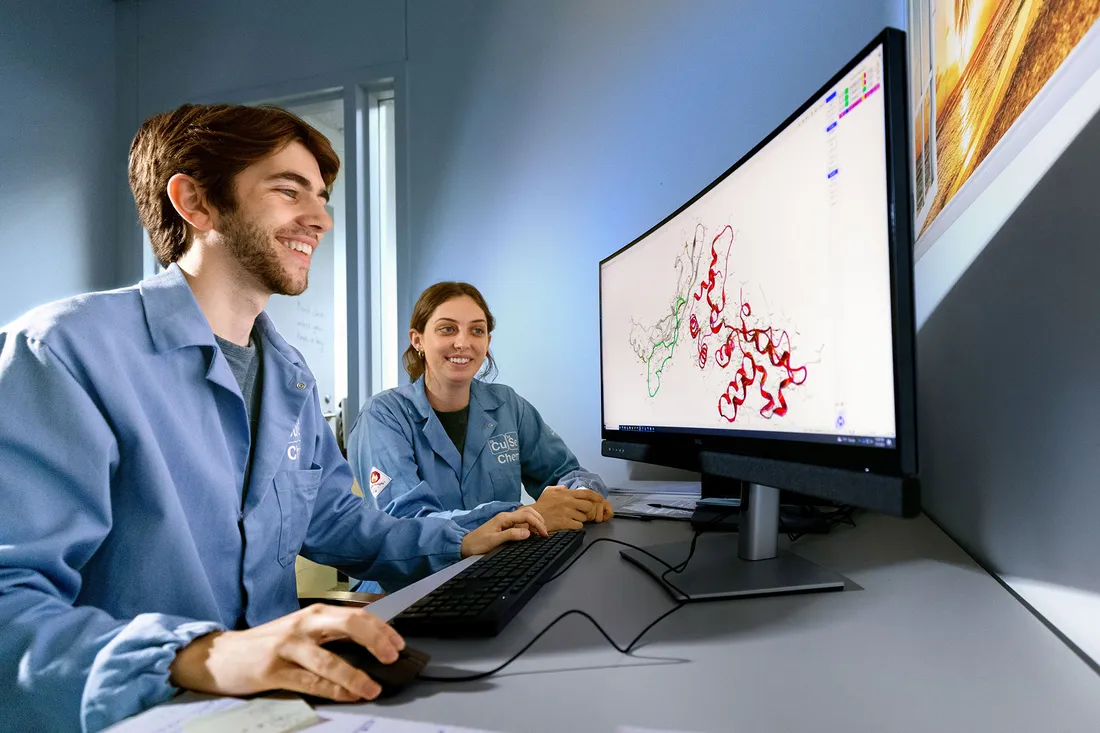
Nicholas Najjar ’21 and Lucy Olcott ’25—a Ph.D. and B.S. student, respectively—get hands-on, real-world experience in Doyle's lab. “He's a driven researcher who looks out for his students,” Olcott says.
Embracing a Technology Ecosystem
Another perk of GEP44 is its impact on gene expression and brain circuitry, something that could potentially reduce the side effects of chemotherapy and one’s craving for opioids, like fentanyl. “Nausea and vomiting are linked to the same part of the brain,” says Doyle, also a Laura J. and L. Douglas Meredith Professor of Teaching Excellence. “If GEP44 can change gene expression and rewire the brain to prevent these reactions, it might help addicts quit illicit drugs or fend off a relapse.”
Talk about teachable moments. Lucy Olcott ’25, a junior majoring in chemistry (medicinal chemistry track) with a minor in nutrition science, has spent the past year in Doyle’s lab, absorbing his multi-faceted approach. “He’s a driven researcher who looks out for his students,” she observes. “Professor Doyle has taught me protocols and methods that make me a better researcher.”
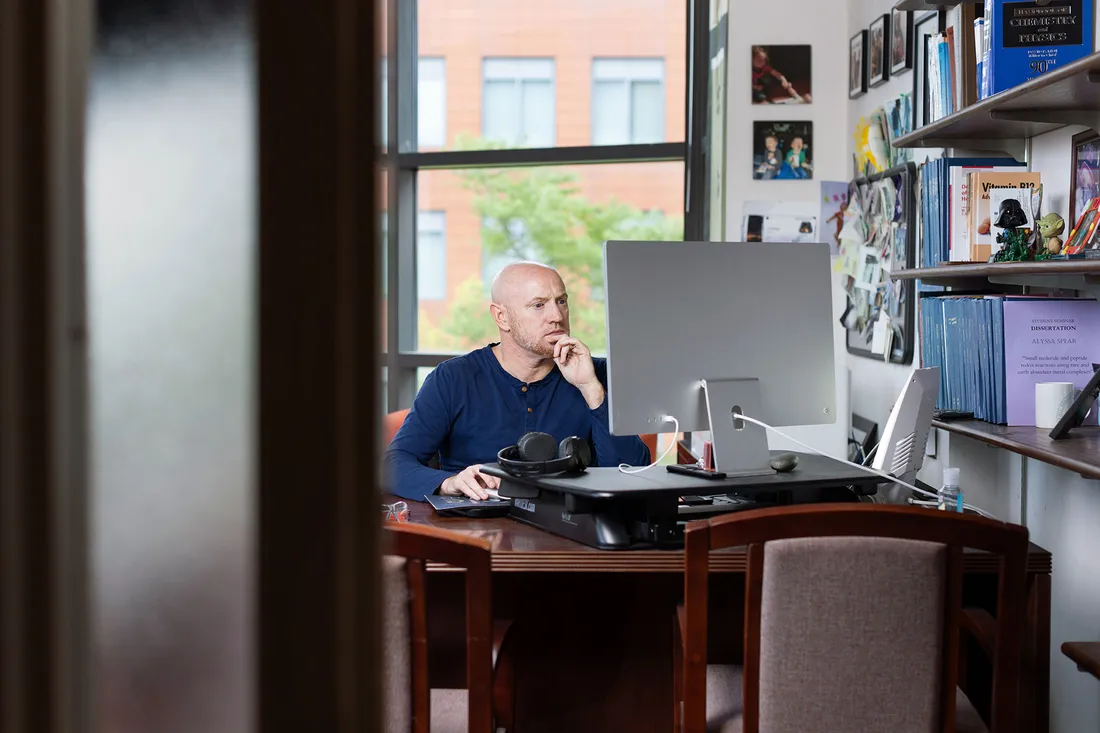
“We’re just beginning to understand what these compounds are capable of,” says Doyle, noting that GEP44 might also reduce the side effects of chemotherapy and one’s craving for opioids, like fentanyl.
GEP44 also is a rich source of intellectual property. Doyle works in lockstep with Executive Director of Technology Transfer Brian Gerling L’99 to file patents and then explore the possibility of commercializing them through collaborations with pharmaceutical companies. “FDA approval is critical to the whole process,” says Doyle, who also teaches at SUNY Upstate Medical University and the Syracuse VA Medical Center.
“Early indications suggest that GEP44 may be superior to other therapeutics, given some of the undesirable side effects reported by patients taking existing drugs,” adds Gerling. “Professors like Robert Doyle yield all sorts of knowledge—from ground-breaking discoveries, to incremental, yet impactful discoveries, and everything in between. Such is the technology ecosystem of Syracuse University.”

